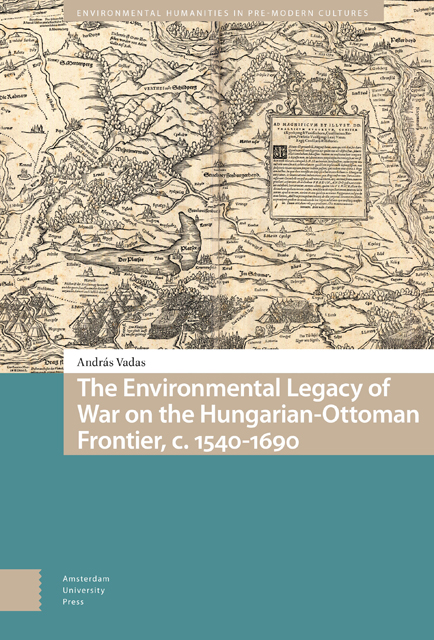Book contents
- Frontmatter
- Dedication
- Contents
- List of Figures
- Note on Names
- Acknowledgments
- 1 Introduction
- 2 From the Center to the Frontier: The Environment of Central Transdanubia in the Early Modern Period
- 3 A Century of Water?: The Rába Valley in the Seventeenth Century
- 4 From Endless Forests to Meadows and Wastelands?: What Happened to the Forests Along the Border?
- 5 Conclusions
- Appendices
- Bibliography
- Index of Geographic Names
- Index of Personal Names
3 - A Century of Water?: The Rába Valley in the Seventeenth Century
Published online by Cambridge University Press: 17 October 2023
- Frontmatter
- Dedication
- Contents
- List of Figures
- Note on Names
- Acknowledgments
- 1 Introduction
- 2 From the Center to the Frontier: The Environment of Central Transdanubia in the Early Modern Period
- 3 A Century of Water?: The Rába Valley in the Seventeenth Century
- 4 From Endless Forests to Meadows and Wastelands?: What Happened to the Forests Along the Border?
- 5 Conclusions
- Appendices
- Bibliography
- Index of Geographic Names
- Index of Personal Names
Summary
Abstract
Using the example of the town of Körmend and its manorial complex as well as another settlement (Csákány) nearby, this chapter argues that the defense strategy of the Kingdom of Hungary in the first half of the seventeenth century led to a significant transformation of the local environment. Heavily relying on natural obstacles such as the Rába River, the Hungarian defense tactics altered the flood regime of the river, causing serious economic difficulties in the entire valley. These economic difficulties can with a high probability be attributed to the defensive role the river had in the half a century following the Fifteen Years’ War.
Keywords: Environmental history, Kingdom of Hungary, Ottoman Empire, frontier, floods, water history
As discussed in Chapter 2, from the middle of the sixteenth century, the Habsburgs as well as members of the Hungarian aristocracy thought of the Rába River and other minor waterways in the central part of Transdanubia as important chains in the frontier between the Ottoman and the Habsburg empires (including the Kingdom of Hungary). Because of this rather special role of the Rába in military defense, other factors besides economic benefits were also taken into consideration when making decisions about farming in the sixteenth and seventeenth centuries. In this chapter, using examples of individual settlements, I will examine the conflicts that were caused by the transformation of the roles of the river Rába and its region. Using the example of the town of Körmend and its manorial complex plus another settlement close by, Csákány, in the first half of the seventeenth century (up to c. 1660), I argue that the defense strategy sketched out in the previous chapter led to a complete transformation of the local environment, most importantly the flood regime of the river, causing serious economic difficulties in the Rába River's entire valley. These economic difficulties can with a high probability be attributed to the defensive role the river had in the period discussed.
Two immediate questions arise: why focus on Körmend, and why the first half of the seventeenth century? The reasons are relatively apparent. Körmend was one of the most significant settlements in the frontier zone.
- Type
- Chapter
- Information
- Publisher: Amsterdam University PressPrint publication year: 2023

